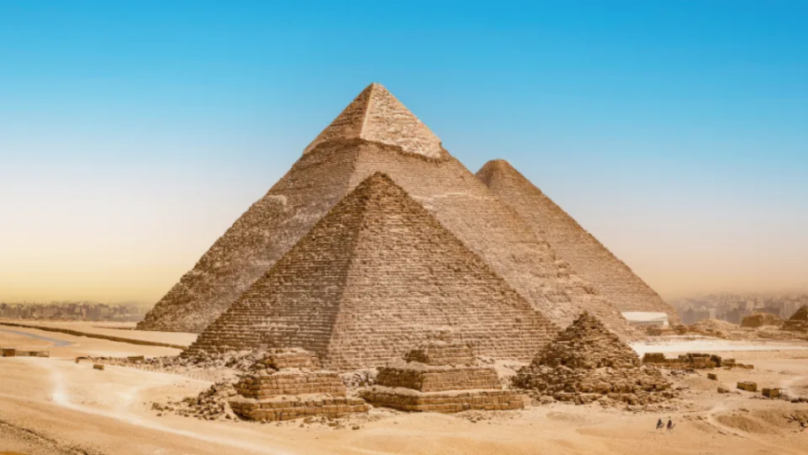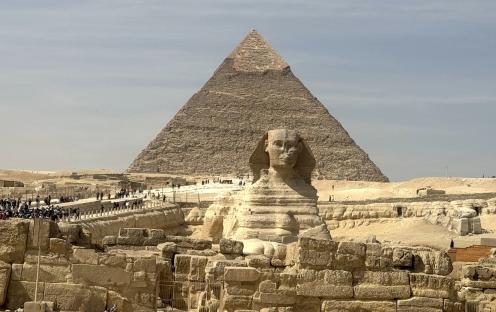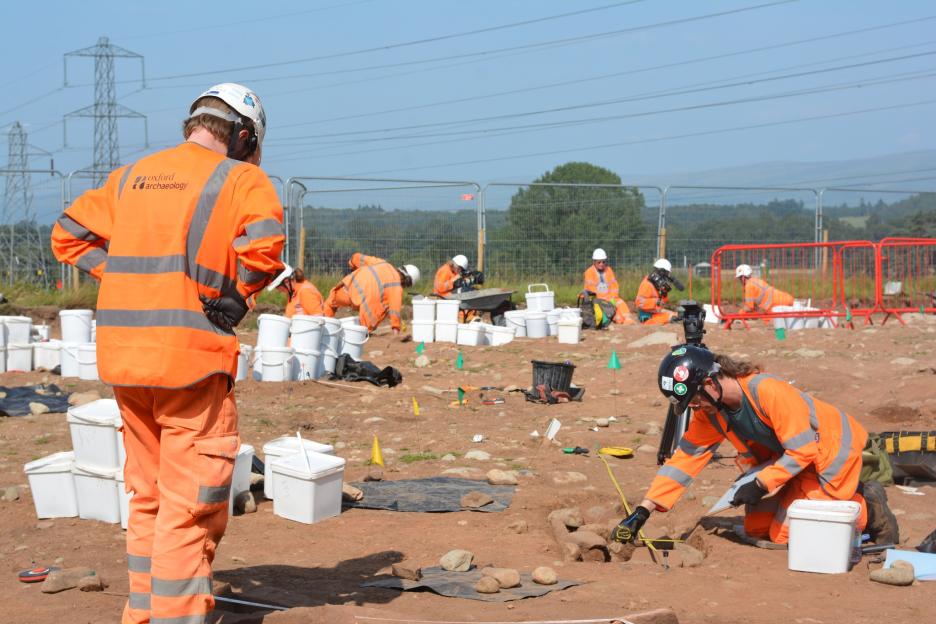ARCHAEOLOGISTS have unearthed hidden inscriptions inside Egypt’s Great Pyramid which could reveal who built the iconic structure.
The groundbreaking discovery could hold the key for who is responsible for the construction nearly five thousand years ago.
 A view of the great pyramids, Giza, Egypt
A view of the great pyramids, Giza, Egypt Archaeologists have challenged the accepted belief that the Great Pyramid was built by slaves
Archaeologists have challenged the accepted belief that the Great Pyramid was built by slavesAccording to the , 100,000 slaves who worked in three-month shifts over 20 years produced the Great Pyramid of Giza.
However, fresh discoveries suggest that paid laborers who took three days off a month are responsible.
Egyptologist Dr Zahi Hawass and his team recently explored a series of narrow chambers above the King’s Chamber using imaging technology, finding never-before-seen markings left by work gangs from the 13th-century BC.
They subsequently stumbled upon tombs of the laborers which included statues of the workers during the pyramid’s construction.
“[The discoveries] confirm that the builders were not slaves. If they had been, they would never have been buried in the shadow of the pyramids,”; Hawass said during an episode of the Matt Beall Limitless podcast.
“Slaves would not have prepared their tombs for eternity, like kings and queens did, inside these tombs.”;
, is the oldest and largest of the three pyramids in Giza,.
As the name suggests it is in Giza, a city on the west bank of theclose to.
It was built as a tomb for the Fourth Dynasty pharaoh Khufu, also known as Cheops, and his queen.
Khufu is believed to have reigned during the 26th century BC from 2589BC to 2566BC.
Few details about the ruler are known, with all the information coming from inscriptions in his necropolis in Giza and later documents.
He is thought to have had two wives, Meritites I and later Henutsen.
Inside the pyramid are three chambers â the Queen’s Chamber and the King’s Chamber, connected by the Grand Gallery.
The latest findings also shed light on how the pyramid was built, revealing that limestone from a quarry just 1,000 feet away was hauled to the site using a rubble-and-mud ramp, remnants of which were found southwest of the monument.
Inscriptions were previously found inside the Great Pyramid during the 19th century, sparking debate that the writings were forged hundreds of years after it was built.
“There was some debate on whether or not that could be a forgery, but now you’re saying thatyou’ve discovered three more cartes within the King’s Chamber,’ Beall asked Dr Hawass.
“They were found in chambers that are difficult and dangerous to access, and they use writing styles that only trained Egyptologists can accurately interpret,’ said Dr Hawass.
“It’s nearly impossible that someone in recent times could have forged something like this.You must climb about 45 feet and crawl through tight spaces to even reach those chambers.”;
Dr Hawass and his team also scooped a number of tools inside the tombs which were likely used to build the pyramid, including flint tools and pounding stones.
He added: “The base of the Great Pyramid is made from solid bedrock, carved 28 feet deep into the ground.
“This means that after marking the square base, the builders cut down into all four sides of the rock until they created a level platform of solid stone, no blocks, just bedrock.
“You can still see this today on the south side of Khufu’s pyramid.”;
in Egypt reached its peak with the Fourth Dynasty of Pharaohs which saw constructions in both Giza and Dashur.
Pyramids were not built in isolation but formed only one part of a pyramid complex.
Other elements usually included a satellite pyramid, other small pyramids for queens, a mortuary temple, a valley temple, and a causeway between them.







